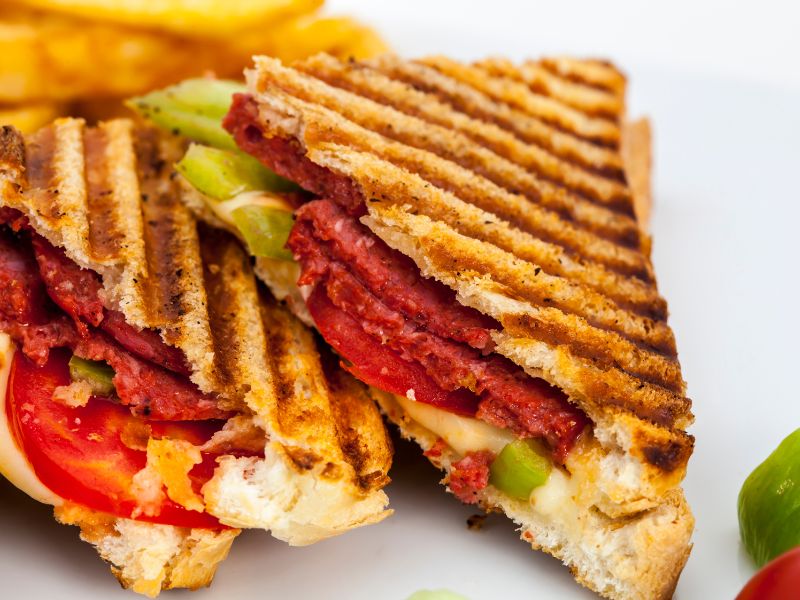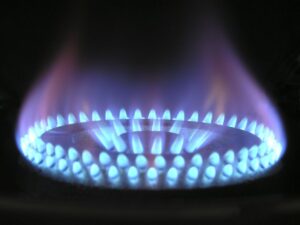Why Does Bread Turn Brown in the Toaster?
Why does bread turn brown in the toaster? Discover the Maillard reaction — the tasty bit of chemistry behind crispy toast, color, and flavor.
It starts with a slice of bread — soft, pale, and quiet.
You slide it into the toaster, press the lever, wait…
And then: crunchy, golden magic.
The surface turns brown.
It smells amazing.
It tastes even better.
But why does bread turn brown in the toaster?
What happens in those few hot seconds?
Why does something so simple make your whole kitchen smell like comfort?
The answer lies in a delicious bit of kitchen chemistry called the Maillard reaction — the same process that gives flavor and color to toast, coffee, cookies, and even grilled steak.
Let’s take a closer look.
First Things First: What’s in Bread?
Before we understand how toasting works, we need to break down the bread itself.
A typical slice contains:
- Starch (from flour)
- Protein (mostly gluten)
- Sugar (even in small amounts)
- Moisture (from water, milk, or eggs)
At room temperature, these ingredients just… sit. But when heat is applied, they begin to dance — molecules shift, break apart, and react.
That’s when breakfast becomes science.
How Does Toasting Work? Meet the Maillard Reaction
The Maillard reaction (say it like “MY-yard”) is a chemical reaction between amino acids (from proteins) and reducing sugars that happens when food is heated above 140°C (about 285°F).
Here’s what happens when bread hits the toaster:
- The heat causes proteins and sugars to break apart
- They recombine into hundreds of new compounds
- These compounds give your toast its brown color, crispy texture, and that mouthwatering smell
This is not burning — it’s controlled browning. The Maillard reaction adds flavor, texture, and aroma.
In fact, it’s the same process that gives:
- Seared meat its crust
- Baked cookies their golden edges
- Roasted coffee its color and complexity
Without it, your toast would be pale, soft, and bland.
Why Is It Called the Maillard Reaction?
The Maillard reaction is named after Louis-Camille Maillard, a French chemist and physician who described the process in 1912.
At the time, Maillard wasn’t trying to make toast — he was studying how proteins react and degrade inside the body.
But accidentally, he discovered one of the most important reactions in cooking.
Today, this process is central to food science — and explains how bread browns, why toast smells so good, and how flavor is created through heat.
Why Toast Feels Crunchy and Dry
As the bread heats up, it loses moisture — water molecules escape as steam.
This dehydration is key to texture. Without it, the bread wouldn’t crisp, and the Maillard reaction wouldn’t occur as effectively.
That satisfying crack you hear when you bite into toast?
That’s the sound of sugars, starches, and proteins reshaping under heat — plus water vapor breaking free.
Bonus tip: Ever noticed toast goes soft if left out too long? That’s because it reabsorbs moisture from the air.
Is This the Same as Burning?
Not quite.
The Maillard reaction is all about browning, not burning.
But if you go too far — too much heat or too much time — the next reaction kicks in: carbonization.
That’s when food turns black, bitter, and… well, burnt.
So when you toast bread, you’re balancing between chemical brilliance and charcoal chaos.
Still Wondering?
- Why does white bread toast faster than whole grain?
- Can you toast other foods without a toaster?
- What happens if you refrigerate toast after it cools?
- Is darker toast always more flavorful — or just more toasted?
👀 Want to Explore More Curiosity-Filled Questions?
If this bite-sized chemistry lesson sparked your appetite, there’s more on Quietly Clever for you to discover.
From why ancient Egyptians wore eyeliner, to how does a Venus flytrap know when to snap shut, to what makes rain smell before it falls, our Curious Question series digs deep into the weird, the wonderful, and the wildly clever.


